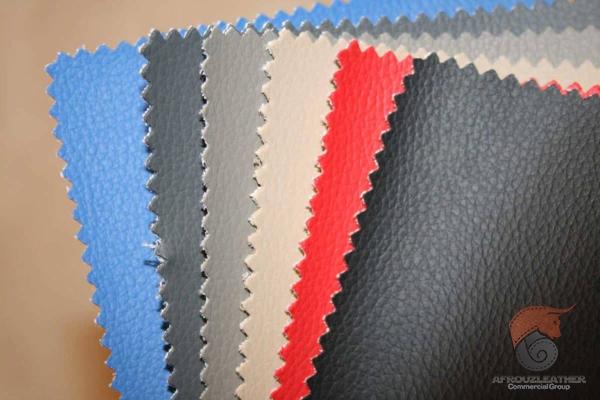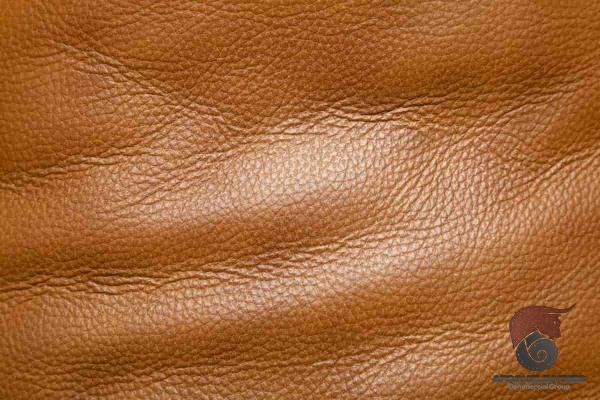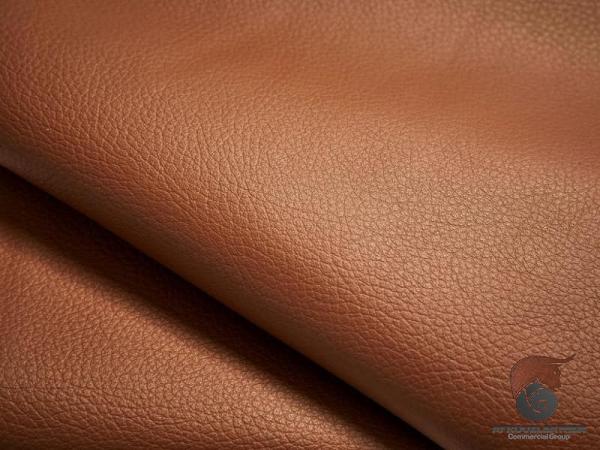In recent years, there has been a growing interest and concern about the ethical and environmental implications of using animal products. As a result, alternative materials have emerged as sustainable options for consumers seeking eco-friendly alternatives. Vegan leather and faux leather are two such materials that have gained popularity, both offering a substitute for traditional animal-based leather. This article aims to provide a comprehensive overview of vegan leather and faux leather, outlining their differences, manufacturing processes, sustainability, and performance. Understanding Vegan Leather: Vegan leather, also known as plant-based leather or synthetic leather, is a term used to describe a variety of materials crafted to mimic the look, feel, and texture of genuine leather without using animal products. It aims to provide an ethical and sustainable alternative by utilizing plant-based materials such as cork, pineapple leaves, apple peels, and other natural fibers. Some synthetic polymers like polyurethane (PU) and polyvinyl chloride (PVC) are also used in vegan leather production. Manufacturing Process of Vegan Leather: The process of manufacturing vegan leather typically involves layering different materials to create a composite material that resembles genuine leather. In the case of plant-based vegan leather, the raw materials go through various treatments such as fermenting, drying, and pressing to create a leather-like texture. Synthetic vegan leather, on the other hand, is produced by coating a fabric base with a layer of polyurethane or polyvinyl chloride. Sustainability of Vegan Leather: One of the primary advantages of vegan leather is its reduced environmental impact. By utilizing plant-based materials, it significantly lowers the carbon footprint associated with traditional leather production, which often involves raising livestock. Additionally, vegan leather does not require the use of harmful chemicals such as chromium, which is commonly used in the tanning process of genuine leather. This reduces the pollution of water sources while offering a safer alternative for workers in the manufacturing process. Performance of Vegan Leather: Vegan leather has made significant progress in terms of its quality and performance compared to its early iterations. Advances in technology have led to improvements in durability, flexibility, and resistance to wear and tear. However, the performance of vegan leather can vary depending on the specific material used. Polyurethane-based vegan leather is known for its softness and flexibility, while polyvinyl chloride-based vegan leather tends to be more rigid and less breathable.
leather
 It is important for consumers to consider these factors and choose the type of vegan leather that best suits their needs. Understanding Faux Leather: Faux leather, also referred to as imitation leather or synthetic leather, is a broad term that encompasses various materials created to resemble genuine leather. Unlike vegan leather, which focuses on plant-based alternatives, faux leather can be derived from both plant-based and petroleum-based sources. Common materials used in faux leather production include polyurethane, polyester, and microfiber. Manufacturing Process of Faux Leather: The manufacturing process of faux leather is similar to that of vegan leather. It involves coating a fabric base with a layer of polyurethane, polyester, or microfiber to create a leather-like texture. Some faux leather is also created by bonding a layer of PVC to fabric or paper. Sustainability of Faux Leather: The sustainability of faux leather largely depends on the specific materials used in its production. Faux leather made with polyurethane and microfiber tends to have a lower environmental impact compared to those made with PVC or polyester. However, it is important to note that petroleum-based materials used in some faux leather production contribute to carbon emissions during their manufacturing process. Performance of Faux Leather: Faux leather has gained popularity due to its affordability and versatility. It is often used in the fashion industry for clothing, accessories, and upholstery. Performance-wise, faux leather can be durable and stain-resistant, making it suitable for everyday use. However, it is generally less breathable than genuine leather and may not age as well. Additionally, the quality and feel of faux leather can vary significantly depending on the manufacturing process and materials used. Choosing Between Vegan Leather and Faux Leather: When deciding between vegan leather and faux leather, it is essential to consider factors such as personal values, environmental impact, and desired performance. Vegan leather offers a cruelty-free and more sustainable alternative by utilizing plant-based materials. On the other hand, faux leather provides a wider range of options and price points but may have a greater reliance on petroleum-based materials. It is crucial for consumers to research and evaluate the specific materials and manufacturing practices used by brands to ensure they align with their values and preferences. Conclusion: Vegan leather and faux leather are two viable alternatives to traditional animal-based leather, offering ethical and eco-friendly options for consumers. While both materials have their advantages and considerations, they present a promising path towards a more sustainable future in the fashion and upholstery industries.
It is important for consumers to consider these factors and choose the type of vegan leather that best suits their needs. Understanding Faux Leather: Faux leather, also referred to as imitation leather or synthetic leather, is a broad term that encompasses various materials created to resemble genuine leather. Unlike vegan leather, which focuses on plant-based alternatives, faux leather can be derived from both plant-based and petroleum-based sources. Common materials used in faux leather production include polyurethane, polyester, and microfiber. Manufacturing Process of Faux Leather: The manufacturing process of faux leather is similar to that of vegan leather. It involves coating a fabric base with a layer of polyurethane, polyester, or microfiber to create a leather-like texture. Some faux leather is also created by bonding a layer of PVC to fabric or paper. Sustainability of Faux Leather: The sustainability of faux leather largely depends on the specific materials used in its production. Faux leather made with polyurethane and microfiber tends to have a lower environmental impact compared to those made with PVC or polyester. However, it is important to note that petroleum-based materials used in some faux leather production contribute to carbon emissions during their manufacturing process. Performance of Faux Leather: Faux leather has gained popularity due to its affordability and versatility. It is often used in the fashion industry for clothing, accessories, and upholstery. Performance-wise, faux leather can be durable and stain-resistant, making it suitable for everyday use. However, it is generally less breathable than genuine leather and may not age as well. Additionally, the quality and feel of faux leather can vary significantly depending on the manufacturing process and materials used. Choosing Between Vegan Leather and Faux Leather: When deciding between vegan leather and faux leather, it is essential to consider factors such as personal values, environmental impact, and desired performance. Vegan leather offers a cruelty-free and more sustainable alternative by utilizing plant-based materials. On the other hand, faux leather provides a wider range of options and price points but may have a greater reliance on petroleum-based materials. It is crucial for consumers to research and evaluate the specific materials and manufacturing practices used by brands to ensure they align with their values and preferences. Conclusion: Vegan leather and faux leather are two viable alternatives to traditional animal-based leather, offering ethical and eco-friendly options for consumers. While both materials have their advantages and considerations, they present a promising path towards a more sustainable future in the fashion and upholstery industries.
Specifications of leather
 By understanding their differences, manufacturing processes, sustainability, and performance, individuals can make informed choices that align with their values and environmental goals. Vegan Leather vs Faux Leather: Making Informed Business Choices 1. The Rise of Ethical Consumerism: In recent years, consumers have become more aware of the social and environmental impact of their purchasing decisions. This shift has led to the rise of ethical consumerism, where customers seek products that align with their values. As a business, understanding the differences between vegan leather and faux leather can enable you to cater to this growing demand and offer sustainable alternatives to animal-based leather. 2. Meeting Sustainability Goals: Embracing vegan leather and faux leather can be an effective way for businesses to meet their sustainability goals. By incorporating these materials into your product offerings, you can demonstrate to customers and stakeholders that you are committed to reducing the environmental impact of your operations. Choosing more sustainable materials can also help attract eco-conscious consumers who prioritize ethical choices in their purchasing decisions. 3. Material Selection for Product Development: When deciding between vegan leather and faux leather, it is crucial to consider the specific needs and requirements of your product development process. Vegan leather, with its diverse range of plant-based materials, can offer unique textures and appearances that closely resemble genuine leather. On the other hand, faux leather provides a wider array of materials, allowing for greater flexibility in terms of design options and cost considerations. 4. Brand Reputation and Differentiation: Adopting vegan leather or faux leather in your product line can help differentiate your brand in a competitive market. Emphasizing your commitment to ethical and sustainable practices can build trust and loyalty among consumers who value transparency and responsible manufacturing. By positioning your brand as a leader in the adoption of alternative materials, you can attract a niche customer base and distinguish yourself from competitors who have yet to embrace these alternatives. 5. Collaboration with Suppliers and Manufacturers: To successfully incorporate vegan leather or faux leather into your product line, it is important to collaborate closely with suppliers and manufacturers who specialize in these materials. Engaging with suppliers who prioritize sustainable sourcing and manufacturing practices ensures that your products align with your sustainability goals. Additionally, involving manufacturers early in the design process can help optimize the use of vegan leather or faux leather, resulting in higher-quality products. 6. Consumer Education and Communication: As businesses transition to vegan leather or faux leather, it is essential to educate and communicate with consumers about the benefits and qualities of these alternative materials.
By understanding their differences, manufacturing processes, sustainability, and performance, individuals can make informed choices that align with their values and environmental goals. Vegan Leather vs Faux Leather: Making Informed Business Choices 1. The Rise of Ethical Consumerism: In recent years, consumers have become more aware of the social and environmental impact of their purchasing decisions. This shift has led to the rise of ethical consumerism, where customers seek products that align with their values. As a business, understanding the differences between vegan leather and faux leather can enable you to cater to this growing demand and offer sustainable alternatives to animal-based leather. 2. Meeting Sustainability Goals: Embracing vegan leather and faux leather can be an effective way for businesses to meet their sustainability goals. By incorporating these materials into your product offerings, you can demonstrate to customers and stakeholders that you are committed to reducing the environmental impact of your operations. Choosing more sustainable materials can also help attract eco-conscious consumers who prioritize ethical choices in their purchasing decisions. 3. Material Selection for Product Development: When deciding between vegan leather and faux leather, it is crucial to consider the specific needs and requirements of your product development process. Vegan leather, with its diverse range of plant-based materials, can offer unique textures and appearances that closely resemble genuine leather. On the other hand, faux leather provides a wider array of materials, allowing for greater flexibility in terms of design options and cost considerations. 4. Brand Reputation and Differentiation: Adopting vegan leather or faux leather in your product line can help differentiate your brand in a competitive market. Emphasizing your commitment to ethical and sustainable practices can build trust and loyalty among consumers who value transparency and responsible manufacturing. By positioning your brand as a leader in the adoption of alternative materials, you can attract a niche customer base and distinguish yourself from competitors who have yet to embrace these alternatives. 5. Collaboration with Suppliers and Manufacturers: To successfully incorporate vegan leather or faux leather into your product line, it is important to collaborate closely with suppliers and manufacturers who specialize in these materials. Engaging with suppliers who prioritize sustainable sourcing and manufacturing practices ensures that your products align with your sustainability goals. Additionally, involving manufacturers early in the design process can help optimize the use of vegan leather or faux leather, resulting in higher-quality products. 6. Consumer Education and Communication: As businesses transition to vegan leather or faux leather, it is essential to educate and communicate with consumers about the benefits and qualities of these alternative materials.
buy leather
 Highlighting the sustainability aspects, durability, and performance of vegan leather or faux leather can help dispel any misconceptions and address concerns that consumers may have about the perceived quality of these materials. Transparent communication can build trust and foster long-term customer relationships. 7. Understanding the Cost Implications: When considering vegan leather or faux leather for your business, it is important to evaluate the cost implications associated with their adoption. While vegan leather made from plant-based materials may be more expensive than faux leather, the price difference can be offset by the increased consumer demand for sustainable alternatives. Assessing the value proposition and market potential of your products will enable you to determine the appropriate pricing strategy and align it with your target market. 8. Compliance with Regulations and Standards: As a responsible business, it is important to ensure that the vegan leather or faux leather materials you use comply with relevant regulations and industry standards. Regulatory bodies often have specific requirements regarding the use of certain chemicals and materials in the manufacturing process. Adhering to these regulations not only ensures the safety and quality of your products but also protects your brand reputation from any negative associations. 9. Market Opportunities and Expansion: The increasing popularity of vegan leather and faux leather presents an opportunity for businesses to enter new markets or expand their existing product lines. With consumer preferences shifting towards sustainable options, there is a growing demand for eco-friendly alternatives in various industries such as fashion, accessories, and furniture. By strategically incorporating vegan leather or faux leather, your business can tap into these expanding market segments and capitalize on the growing customer base. 10. Continuous Innovation and Research: As consumer preferences and technology evolve, it is crucial for businesses to stay informed and adapt accordingly. Investing in research and development activities focused on improving the performance, sustainability, and durability of vegan leather and faux leather can give your business a competitive edge. By continuously innovating and staying ahead of the curve, you can ensure that your products remain relevant and meet the changing demands of environmentally conscious consumers. Conclusion: The comparison between vegan leather and faux leather highlights the opportunities and considerations businesses face when choosing alternative materials to replace animal-based leather. Embracing these sustainable options allows businesses to meet the demand for ethical products, enhance brand reputation, and contribute to the global shift towards a more sustainable future. By carefully assessing the specific needs of your business and collaborating with suppliers and manufacturers, you can successfully navigate the adoption of vegan leather or faux leather, positioning your brand as a leader in ethical and environmentally friendly practices.
Highlighting the sustainability aspects, durability, and performance of vegan leather or faux leather can help dispel any misconceptions and address concerns that consumers may have about the perceived quality of these materials. Transparent communication can build trust and foster long-term customer relationships. 7. Understanding the Cost Implications: When considering vegan leather or faux leather for your business, it is important to evaluate the cost implications associated with their adoption. While vegan leather made from plant-based materials may be more expensive than faux leather, the price difference can be offset by the increased consumer demand for sustainable alternatives. Assessing the value proposition and market potential of your products will enable you to determine the appropriate pricing strategy and align it with your target market. 8. Compliance with Regulations and Standards: As a responsible business, it is important to ensure that the vegan leather or faux leather materials you use comply with relevant regulations and industry standards. Regulatory bodies often have specific requirements regarding the use of certain chemicals and materials in the manufacturing process. Adhering to these regulations not only ensures the safety and quality of your products but also protects your brand reputation from any negative associations. 9. Market Opportunities and Expansion: The increasing popularity of vegan leather and faux leather presents an opportunity for businesses to enter new markets or expand their existing product lines. With consumer preferences shifting towards sustainable options, there is a growing demand for eco-friendly alternatives in various industries such as fashion, accessories, and furniture. By strategically incorporating vegan leather or faux leather, your business can tap into these expanding market segments and capitalize on the growing customer base. 10. Continuous Innovation and Research: As consumer preferences and technology evolve, it is crucial for businesses to stay informed and adapt accordingly. Investing in research and development activities focused on improving the performance, sustainability, and durability of vegan leather and faux leather can give your business a competitive edge. By continuously innovating and staying ahead of the curve, you can ensure that your products remain relevant and meet the changing demands of environmentally conscious consumers. Conclusion: The comparison between vegan leather and faux leather highlights the opportunities and considerations businesses face when choosing alternative materials to replace animal-based leather. Embracing these sustainable options allows businesses to meet the demand for ethical products, enhance brand reputation, and contribute to the global shift towards a more sustainable future. By carefully assessing the specific needs of your business and collaborating with suppliers and manufacturers, you can successfully navigate the adoption of vegan leather or faux leather, positioning your brand as a leader in ethical and environmentally friendly practices.

Your comment submitted.